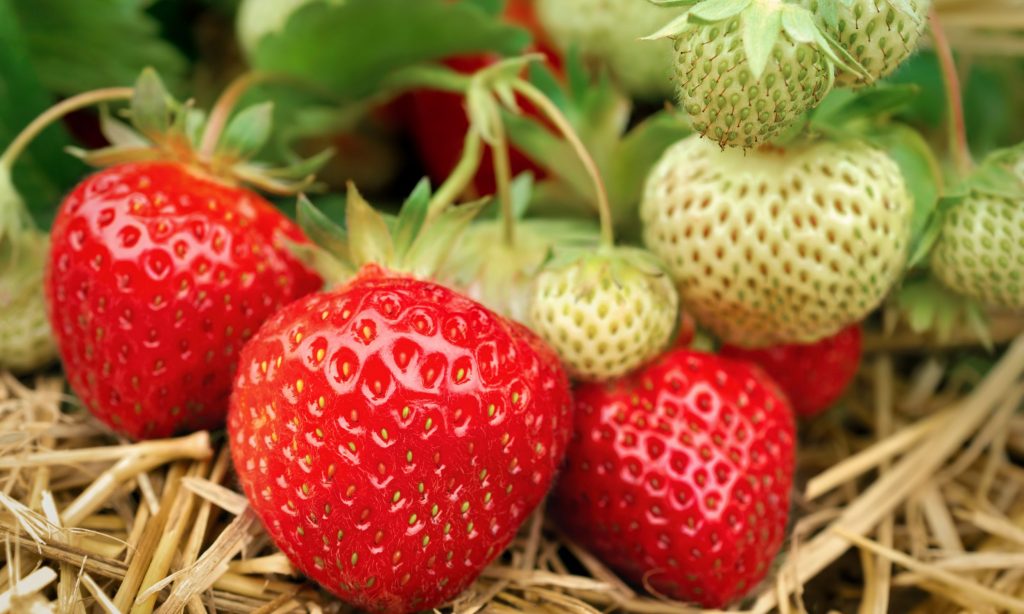Growing Strawberries
Strawberries are a delicious and nutritious fruit that can be enjoyed all year long. They are a good source of fiber, vitamin C, and antioxidants, and they have anti-inflammatory properties. Strawberries can be eaten fresh or added to smoothies, yogurt, cereal, or other recipes. Growing your own strawberries is easy and fun, and it allows you to enjoy this delicious fruit all year long. Here are some tips for growing strawberries at home.
Disclosure: Some of the links below are affiliate links, meaning, at no additional cost to you, I will earn a commission if you click through and make a purchase.
The best thing about strawberries is that they’re very easy to grow in almost all climates and soils across the United States and Canada—as long as you plant them in a location that gets full sun.
Types of strawberries
When it comes to strawberries, there are three main types: June-bearing, everbearing, and day-neutral.
June-bearing strawberries are the most common type grown in home gardens. They typically produce one large crop of fruit in early summer.
Everbearing strawberries produce two crops of fruit per year, with the first crop ripening in late spring or early summer and the second crop ripening in late summer or early fall.
Day-neutral strawberries produce fruit throughout the growing season, from early spring to late fall.
While all three types of strawberries are delicious, June-bearing berries tend to be the sweetest, while everbearing and day-neutral berries are slightly tart. When choosing which type of strawberry to grow, it is important to consider your climate and whether you want an early or late harvest.
We have had great success growing strawberries from Burpee.

When to Plant Strawberries
Strawberry plants generally need about 60 days to produce fruit, so it’s important to plant them at the right time of year. In most climates, the best time to plant strawberries is in the spring, after the last frost. However, in warmer climates, it’s often possible to plant strawberries in the fall and enjoy a second crop in the spring.
The key to successful strawberry cultivation is to select a variety that is well-suited to your climate. Research local nurseries or ask experienced gardening friends for recommendations before making your purchase. With a little care and attention, you can enjoy delicious homegrown strawberries for many seasons to come.

Stay Organized!!
This garden planner has everything you need to plan a successful garden. There’s space to take notes, set goals, and jot down your wishlist for your garden. Plus, it’s printable!! The Garden Planner and Journal will keep you organized and give you a place to take notes and reflect on your garden.
Choosing and Preparing a Planting Site
Growing strawberries is a fun and delicious way to get started in gardening. But before you can enjoy fresh berries, you need to choose and prepare a planting site.
The most important thing to remember is that strawberries need full sun. Choose a spot in your garden that gets at least six hours of sunlight per day.
Once you’ve selected a sunny spot, it’s time to prepare the soil. The ideal soil for strawberries is well-drained and rich in organic matter. If your soil doesn’t meet these requirements, you can improve it by adding compost or peat moss.
Once the soil is ready, you can plant your strawberry plants and look forward to a tasty harvest!
How to Plant Strawberries
Summer is the perfect time to plant strawberries. These juicy red berries are not only delicious, but they’re also relatively easy to grow. Here are a few tips for planting strawberries:
1. Choose a sunny spot in your garden. Strawberries need at least six hours of sunlight each day.
2. Prepare the soil by adding organic matter such as compost or manure. This will help improve drainage and provide nutrients for the plants.
3. Plant the strawberry plants about 18 inches apart. If you’re planting in rows, space the rows about three feet apart.
4. Water the plants regularly, especially during dry periods. Mulching with straw or other material will help to conserve moisture.
With a little care, you’ll soon be harvesting your own delicious strawberries!

How to Grow Strawberries
- Keep strawberry beds mulched to reduce water needs and weed invasion. Any type of mulch—from black plastic to pine straw to shredded leaves—will keep the soil moist and the plants clean.
- Be diligent about weeding. Weed by hand, especially in the first months after planting.
- Moisture is incredibly important to strawberries due to their shallow roots. Water adequately, about one inch per square foot per week.
- Strawberry plants need a lot of water when the runners and flowers are developing and again in the late summer, when the plants are fully mature and gearing up for winter dormancy.
- Fertilize with all-purpose granules for strong growth. In warm weather, berries ripen about 30 days after blossoms are fertilized.
- In the first year, pick off blossoms to discourage strawberry plants from fruiting. If not allowed to bear fruit, they will spend their food reserves on developing healthy roots instead, which is a good thing. The yields will be much greater in the second year.
- Eliminate runner plants as needed. First and second generations produce higher yields. Try to keep daughter plants spaced about 10 inches apart.
- Row covers are a good option for protecting blossoms and fruit from birds.
Winter Care of Strawberries
When it comes to strawberry care, winter is an important time to protect your plants from the cold. One way to do this is to cover them with a layer of mulch. This can help insulate the ground and keep the roots warm.
You can also use a floating row cover to keep the plants warm and prevent frost damage. Just be sure to remove the cover during any periods of warm weather, so that the plants can get some ventilation.
Another important step in winter strawberry care is to prune any damaged or diseased leaves and stems. This will help encourage new growth in the spring.
By taking these simple steps, you can help ensure that your strawberry plants will be healthy and productive for years to come.

You may also enjoy these related articles:
- Overwintering Strawberries in a Greenstalk
- Creating a Permaculture Orchard
- Growing Blueberries in Containers
- How to Make Strawberry Jam
Did you enjoy this article? Want to hear more? Stay in touch! Sign up below to receive weekly tips and inspiration for your homestead.
